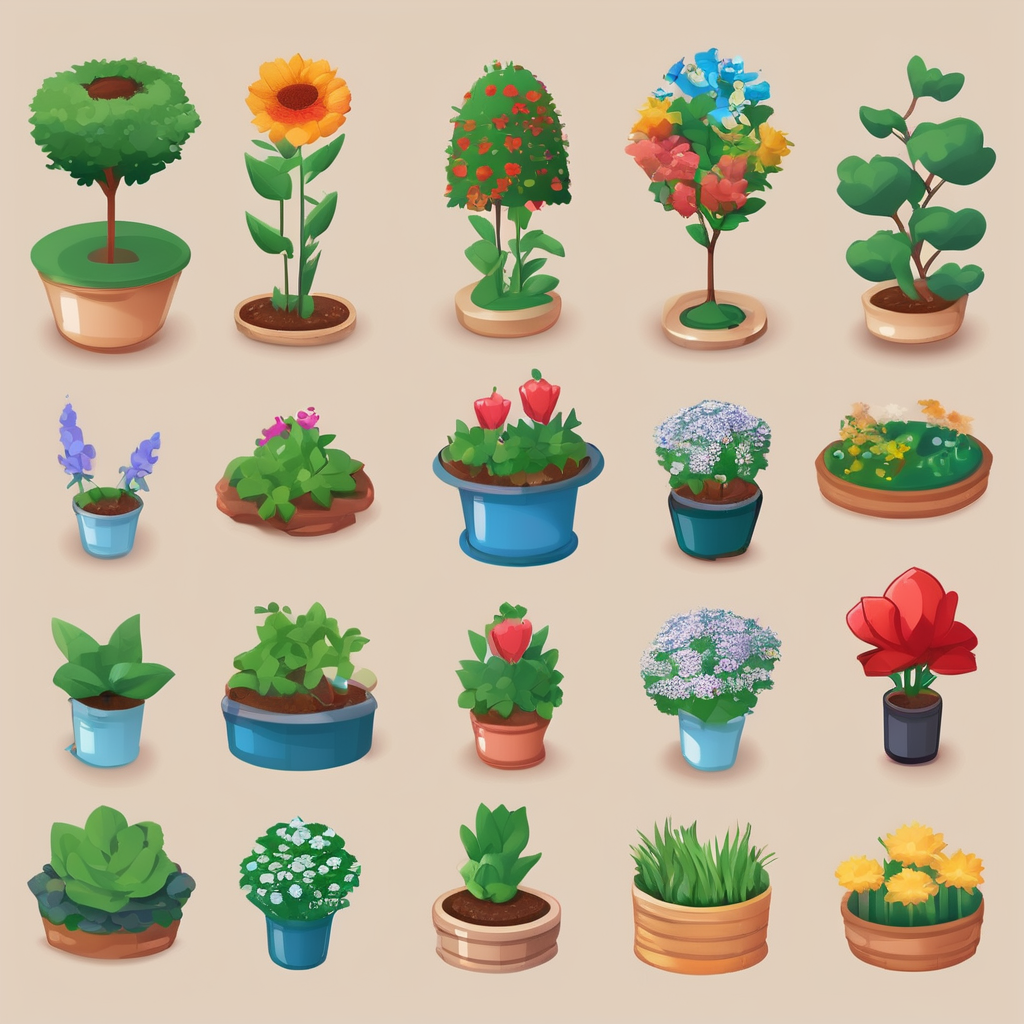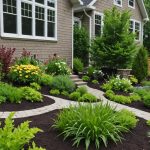Creating a secure play space in your UK garden presents unique challenges, especially on uneven terrain. Parents often grapple with safety and stability concerns that can hinder outdoor playtime. By exploring practical solutions, such as levelled surfaces and creative landscaping, you can transform your garden into a safe haven for children. Discover innovative techniques that not only enhance safety but also encourage exploration and fun. Embrace the opportunity to turn your garden into a vibrant play zone, ensuring that every child can enjoy outdoor adventures safely.
Understanding Uneven Terrain in UK Gardens
Navigating uneven terrain in UK gardens presents unique challenges, often requiring thoughtful landscaping and safety considerations. Many gardens across the UK feature sloping ground, rocky areas, or unexpected dips, posing potential hazards during maintenance or everyday use. Recognising these challenges is crucial for creating a safe and enjoyable outdoor space.
A lire également : Creating a Stunning Living Wall in Your UK Home: Tips for Low Natural Light Environments
Assessing ground conditions is essential for ensuring safety. Identifying areas prone to waterlogging, erosion, or instability can prevent accidents and costly repairs. When planning UK garden landscaping, attention to these details helps mitigate risks, making the garden not only beautiful but also secure.
Moreover, UK-specific landscaping regulations guide homeowners in managing uneven terrain effectively. These regulations often cover aspects such as drainage solutions, retaining walls, and safe pathway construction. Understanding and adhering to these guidelines is vital for compliance and safety.
A découvrir également : Top Eco-Friendly Insulation Solutions for Your UK Cottage: A Comprehensive Guide
In summary, addressing uneven terrain in UK gardens involves acknowledging common challenges, prioritising safety, and following local regulations. By doing so, homeowners can transform their gardens into safe, functional, and aesthetically pleasing spaces. Whether through professional landscaping or DIY projects, careful planning and execution are key to overcoming the hurdles of uneven terrain.
Safety Standards for Children's Play Areas
Ensuring play area safety is paramount when designing outdoor spaces for children. In the UK, strict child safety regulations govern the construction and maintenance of play areas to protect young users. These regulations encompass a variety of safety measures, including the use of impact-absorbing surfaces, adequate spacing between equipment, and secure anchoring to prevent tipping.
One of the critical aspects of these UK safety standards is the emphasis on age-appropriate play equipment. It's essential to select equipment that aligns with the developmental stage of the children using the play area. This not only maximises enjoyment but also reduces the risk of injury. Equipment designed for toddlers, for example, should be lower to the ground and feature softer materials.
In addition to equipment, recommended safety features include:
- Soft surfaces: Materials like rubber mulch or sand to cushion falls.
- Clear zones: Sufficient space around equipment to prevent collisions.
- Regular maintenance: Routine checks to ensure equipment remains in safe working order.
By adhering to these standards, parents and guardians can create a safe environment where children can play freely and safely, fostering both fun and peace of mind.
Leveling Uneven Ground: Techniques and Tips
Leveling ground in your garden is a crucial step in creating a safe and visually appealing outdoor space. To begin, gather essential tools and materials such as a shovel, rake, spirit level, and topsoil. These will aid in the landscaping techniques necessary to achieve a smooth surface.
Start by marking the area you wish to level. Use stakes and string to outline the section, ensuring accuracy. Remove any vegetation or debris from the marked area to prepare the ground. Next, use a shovel to dig out high spots and fill in low areas with topsoil. A rake will help you distribute the soil evenly, while a spirit level ensures the surface is flat.
When undertaking garden preparation, patience is key. Compact the soil gently with your feet or a tamper to prevent future sinking. Water the area lightly to settle the soil further.
Avoid common mistakes such as over-compacting, which can lead to poor drainage, or neglecting to check the level frequently. By following these steps and using the right tools, you can effectively level your garden, setting the stage for successful landscaping projects.
Choosing the Right Materials for Safety
Selecting the appropriate safe materials for your garden is essential, especially when creating child-friendly spaces. With various garden flooring options available, making an informed choice ensures both safety and aesthetic appeal.
Overview of Safe Surfacing Options
When considering surfacing for play areas, options like rubber mats, grass, and wood chips are popular. Rubber mats offer excellent shock absorption, reducing injury risk. Grass provides a natural look but requires regular maintenance. Wood chips are cost-effective and provide a soft landing surface.
Pros and Cons of Different Materials
- Rubber Mats: Highly durable and weather-resistant, but can be costly. They offer excellent protection against falls.
- Grass: Aesthetic and eco-friendly, but can become slippery when wet and needs frequent upkeep.
- Wood Chips: Affordable and easy to install, but may require regular topping up and can scatter easily.
Selecting Materials Based on Budget and Aesthetics
Budget constraints often dictate material choices. For a balance between safety and cost, wood chips are ideal. For aesthetic appeal with minimal maintenance, consider synthetic grass. Ultimately, the best child-friendly surfaces will align with both your budget and the desired look of your garden.
Selecting Age-Appropriate Play Equipment
Choosing the right play equipment is crucial for ensuring safety and enjoyment in outdoor spaces. When selecting age-appropriate toys, consider the developmental needs and physical abilities of children at different stages. For toddlers, focus on equipment with rounded edges and low heights, such as small slides or climbing frames. Older children might enjoy more complex structures like swings or monkey bars.
In UK gardens, outdoor play solutions should also consider space constraints and weather conditions. Popular choices include modular playsets that can be adjusted as children grow, and weather-resistant materials that withstand the UK climate. Look for equipment with safety certifications, ensuring it meets British safety standards.
Regular maintenance is vital in keeping play equipment safe. Conduct frequent safety checks to identify wear and tear, loose bolts, or damaged surfaces. This proactive approach prevents accidents and prolongs the lifespan of the equipment. Additionally, educate children on proper use to minimise risks.
By carefully selecting and maintaining age-appropriate toys and equipment, parents can create engaging and safe play environments that cater to their children's evolving needs.
Landscaping Tips for a Safe Play Environment
Creating a child-friendly garden involves thoughtful garden landscaping to ensure safety and enjoyment. Incorporating safety landscaping techniques can significantly enhance the play environment for children, making it both fun and secure.
One key aspect is establishing natural barriers and safe zones. Use hedges or low fences to define play areas, preventing children from wandering into hazardous zones. These barriers not only ensure safety but also add aesthetic value to the garden. Additionally, consider using raised beds or retaining walls to separate different sections of the garden, providing clear boundaries.
Incorporating child-friendly plants and features is crucial. Opt for non-toxic, hardy plants that can withstand rough play. Avoid plants with thorns or toxic leaves. Instead, choose varieties like sunflowers, marigolds, or lavender. These plants are not only safe but also add vibrant colours and pleasant scents to the garden.
Furthermore, integrating soft landscaping features like grassy mounds or sandpits can create engaging play areas. These features offer safe surfaces for play, reducing the risk of injury. By carefully planning and implementing these landscaping tips, you can create a safe play environment that nurtures children's curiosity and creativity.
Visual Aids and Step-by-Step Tutorials
Incorporating visual aids and step-by-step landscaping tutorials can significantly enhance the success of your DIY garden projects. These resources break down complex tasks into manageable actions, making it easier for enthusiasts to follow along and achieve professional results.
Visual guides are crucial in both the planning and execution phases. They provide clear illustrations of each step, reducing the risk of misinterpretation and ensuring tasks are completed correctly. For instance, a visual guide on building a retaining wall might include diagrams showing the correct placement of each layer, ensuring stability and safety.
There are numerous step-by-step landscaping tutorials available that cater to various garden projects. From leveling uneven ground to constructing raised beds, these tutorials offer detailed instructions accompanied by images or videos. They often highlight common pitfalls and provide tips for overcoming challenges, making them invaluable for DIYers.
To find reliable resources, consider platforms like gardening forums, reputable DIY websites, and instructional videos on platforms like YouTube. These often feature expert advice and user reviews, ensuring the information is both accurate and practical. By leveraging these resources, you can confidently tackle your garden projects with the guidance of detailed visual aids.
Product Recommendations for UK Gardens
Selecting the right product recommendations for UK gardens requires careful consideration of safety and quality. Several reputable UK suppliers specialise in safe play equipment and materials tailored for outdoor spaces.
Overview of UK Suppliers
When seeking reliable suppliers, consider companies like Wickes, B&Q, and Homebase. These suppliers offer a range of products that meet British safety standards, ensuring peace of mind when purchasing play equipment. They provide detailed product specifications, helping you make informed decisions.
Recommended Products
For safe play equipment, consider items like modular playsets, which can grow with your child. Look for products with safety certifications and features such as rounded edges and non-toxic materials. Additionally, rubber mats for surfacing are highly recommended due to their excellent shock absorption properties.
Tips for Comparing Prices
To find the best deals, compare prices across multiple suppliers. Online platforms often offer competitive pricing and discounts. Consider subscribing to newsletters for exclusive offers. When comparing, ensure you evaluate based on both price and quality to avoid compromising on safety.
By choosing products from reputable UK suppliers, you can create a safe and enjoyable garden environment.












